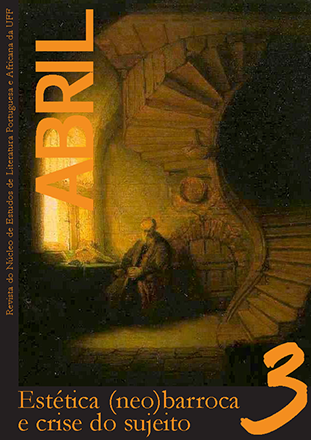The saturnine look of António Lobo Antunes in “What can I do when everything is on fire?”
DOI:
https://doi.org/10.22409/abriluff.v2i3.29806Keywords:
Portuguese modern novel, António Lobo Antunes, neobaroqueAbstract
This article proposes an articulation of theories on Baroque and Neo-Baroque, relating them to the aesthetic experiences of the Occidental culture and to the contemporary Portuguese novel. The reason of melancholy as a theme and as a procedure of writing is resumed, considering the saturnine meditation observed on Dürer’s print, Melancolia, understood by João Adolpo Hanses as the “allegory of the finite knowledge”, whose contemplation leads to the objects which resemble to the ruins. The Baroque worship of the ruins may be understood through the “significant fragment”, in other words, the fragment that, according to Walter Benjamin’s view, “is the noblest material of the Baroque creation”. This is the contemplation of the things to be investigated in the contemporaneity, based on António Lobo Antunes’s characters, emphasizing Paulo’s melancholy eye - a character from the novel Que farei quando tudo arde? - embedded in a familiar environment where he does not get identified with, aware of his fragility in face of life and tormented by the idea of death.
Downloads
Downloads
Published
How to Cite
Issue
Section
License
I authorize the journal Abril - NEPA/UFF to publish the paper of my authorship/responsibility that I now submit, in case it is accepted for online publication.
Moreover, I declare that this contribution is original, that it was not submitted to any other editor for publication, and I sign the present declaration attesting the truth of all its contents.
The copyright of the works published at the virtual space of the journal Abril - NEPA/UFF are automatically entitled to the journal. Their total or partial reproduction is conditioned to the authors' citations and publication data.

Abril is licensed under a Creative Commons - Attribution-NonCommercial 4.0 International (CC BY-NC 4.0).









